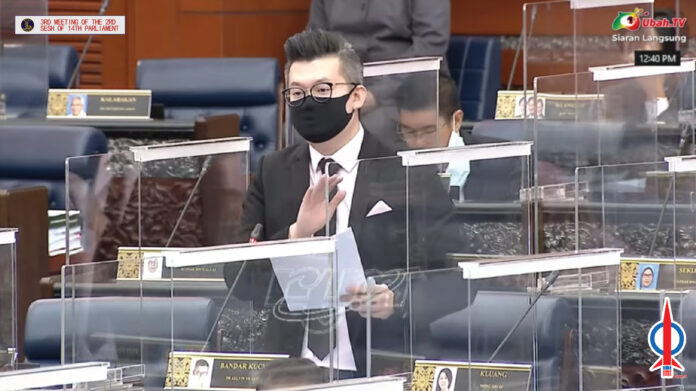Press Statement by YB Kelvin Yii:
While I welcome the announcement of implementation of pneumococcal vaccine under the National Immunisation Programme (NIP) this year which was initiated under the previous Pakatan Harapan(PH) government, I strongly question the decision of the Ministry of Health that has opted for the cheaper PCV10 pneumococcal vaccine as it protects against fewer bacterial strains compared to the PCV13 vaccine.
I am concern the government will be “penny-wise pound foolish” especially since our children may be deprived of a better vaccine and that it may not achieves its target to provide adequate protection for our children from all common serotypes.
The 2019 WHO Position Paper on “Pneumococcal Conjugate Vaccines in Infants and Children under 5 years of age” clearly states that while PCV 10 may be cheaper initially, but if we evaluate over a 5-year period, PCV13 was estimated to save an additional RM 696 million compared to the use of PCV10. This demonstrated significant cost saving potential as well as cost effectiveness of including PCV13 instead of PCV10 into the NIP.
On top of that, PCV13 is the most widely used pneumococcal conjugate vaccine globally where currently it is introduced in NIPs in 127 countries with exclusivity in 120 countries, with over 1 billion doses that have been distributed. This is due to the reason that PCV13 provides the broadest serotype coverage of any licensed PCV in Malaysia, since it contains three additional serotypes: 3, 6A, and 19A
Fact of the matter, the most common pneumococcal detected in Malaysia is serotype 6A & 19A which is not covered under PCV10. PCV13 provides the broadest coverage of IPD consistently in most countries in Asia.
In Malaysia, PCV13 covers 86.1 % of Invasive Pneumococcal Disease (IPD) vs. 62.9 % for PCV10 as per Institute Medical Research (IMR) data. In Malaysia, serotype 19A accounts for 11.8% of IPD, while 6A accounted for 10.6 % of IPD serotypes; together, serotypes 3, 6A & 19A account for 23.2 % of all IPD in children under 5 years and for 32.5 % of IPD among adults above 50 years.
The sum of serotype 3, 6A & 19A accounts for a proportion of IPD that ranges from 18.0-18.8 % in Thailand, 19.3 % in Philippines, 23.8 % in Taiwan, and 11.1 % in India.
On top of that, there are additional clinical impact of usage of PCV13 especially to children less than 5 years old including;
- a) Protection of Malaysian children below 5 years against IPD isolates that have reduced susceptibility to penicillin
- b) positive impact on Community Acquired Pneumonia (CAP) disease burden which is one of leading cause of under-5 mortality in Malaysia.
- c) Significant reductions in Otitis Media (OM) after the introduction of PCV13 in the NIP:
In Malaysia, the overall prevalence of Otitis Media is 13.8, and the introduction of PCV-13 has shown to significantly reduced rates of OM episodes, among children younger than 5 years of age, as demonstrated in the US, UK, Israel and Japan, including OM due to serotype 6A & 19A
So, I believe it is important the Health Minister clearly explains their decision to purchase PCV10 instead of PCV 13. This includes greater transparency in the whole deal including the differences in cost for the purchase of PCV10 in comparison to PCV13, the company that was given the tender and was it done by open tender. This is important to make sure there will not be any wastage and that we can make sure that we provide the best coverage for our people.
Kelvin Yii Lee Wuen
MP Bandar Kuching










